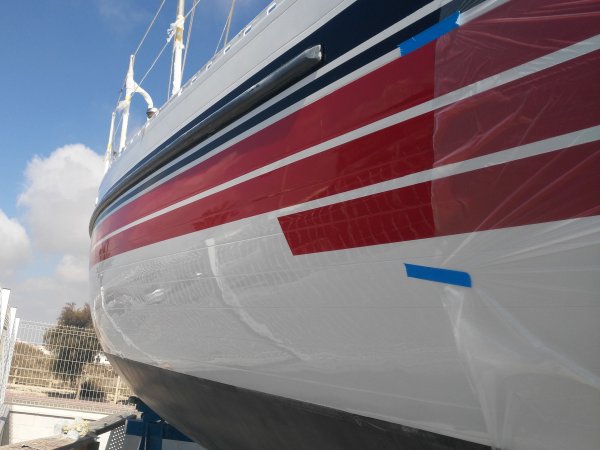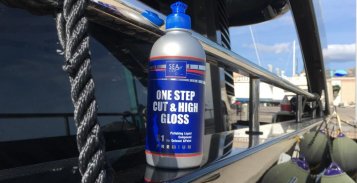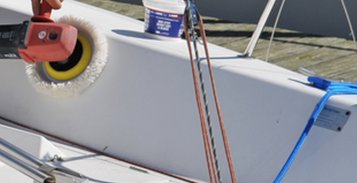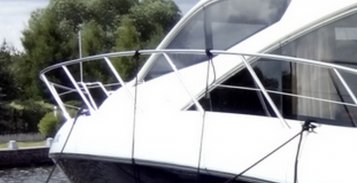
USE:
SURFACE:
EFECT:

LIGHT COLOR GELCOAT – POLISHING INSTRUCTION USE: Renewing the gelcoat surface of light color with mechanical damage and scratches that […]

DARK COLOR GELCOAT – POLISHING INSTRUCTION USE: Removal of discoloration, chalking gelcoat, dull Renewing any surface color which has a small […]

RENEWING THE SURFACE WITHOUT GRINDING – POLISHING INSTRUCTION USE: Renewal of any color with small mechanical damages and small scratches […]

PLEXI AND POLYCARBONATES – POLISHING INSTRUCTION USE: Removal of mechanical damage, scratches and dull from the surface of hatches, windows and […]
Yes, you can paint the bottom of the boat with polyurethane paint due to its high mechanical strength. We recommend this solution when the boat is not launched for a long time and is not exposed to fouling.
Sea-Line HARD and Sea-Line self-polishing antifouling are not intended for aluminum surfaces. They include copper oxide, which in contact with aluminum causes galvanic corrosion. Especially on aluminum, we offer ALU-PLUS self-polishing anti-fouling paint, which, in addition to excellent adhesion to aluminum, is also 30% more effective than traditional anti-fouling paints.

Επαναπλήρωση και για να αντιμετωπιστούν οι ανισότητες που προκαλούνται από ζημιές ή κατά τη διάρκεια της παραγωγής

Συγγνώμη,αυτή η εγγραφή είναι διαθέσιμη μόνο στα Πολωνικά, Αγγλικά Αμερικής, Γερμανικά, Γαλλικά, Ισπανικά Ευρώπης, Ιταλικά, Βουλγαρικά και Ρωσικά.

Παρέχει μια αισθητική και μία τέλειαόψητου σκάφους επίσης προστασία έναντι του νερού και uv ακτινοβολίας

Προστατεύει το σκάφος από την θαλάσσια ρύπανση , μαλακή και σκληρή

Αποτελεσματικάαφαιρείτις γρατσουνιές, ανανεώνει την απόχρωση του gelcoat ή του χρώματος, με επίπτωση γρήγορης λάμψης

Ειδική προετοιμασία για τον αποτελεσματικό καθαρισμό και φινίρισμα

Πλαστικοποίησης, κόλληση και συμπληρώνοντας ρωγμές στο gelcoat

Ποικιλία προϊόντων που είναι χρήσιμαστις εργασίες κατασκευής σκαφών